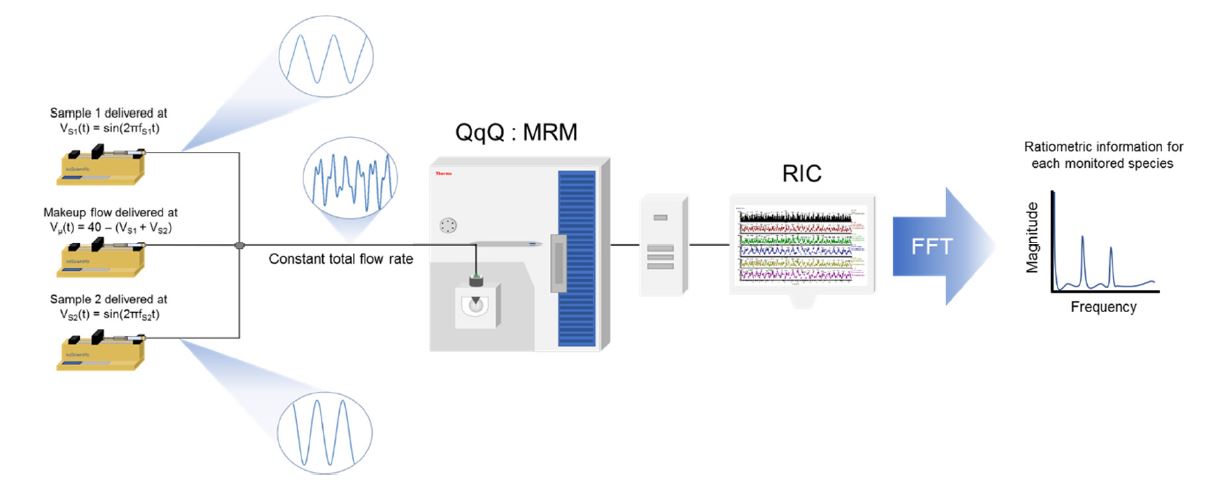Frequency-Modulated Continuous Flow Analysis
- Patent Pending
Professor Roper and collaborators have developped a new method to multiplex mass spectrometric sample analysis. The purpose of this invention is to be able to analyze multiple samples simultaneously using mass spectrometry. The operation of this method is to pulse the flow of individual samples to the mass spectrometer at unique frequencies. The flow from the individual samples are combined together with a make-up flow that is used to ensure the total flow rate to the mass spectrometer is constant. After mixing of all the streams from the samples and the make-up flow, pulses of each sample are delivered to the mass spectrometer with the pulse frequencies being unique to that particular sample. The mass spectrometer collects the m/z data vs. time. At each m/z there is a time-dependent signal that is the sum of all the pulses from the different samples. For any one particular m/z, a Fourier transform is used to convert the time-based mass spectrometry signal intensity to the frequency domain resulting in a series of peaks at particular frequencies. Each of these frequency peaks corresponding to the different samples. The height of the peaks in the frequency domain is proportional to the concentrations of the samples in the syringes.
The benefit of this new method over the labeling strategy is that the frequency modulated approach allows multiplexing of a theoretically wide number of samples without the need for chemical labeling. Therefore, any problems with chemical labeling (inefficiencies, side products, etc.) are avoided. Also, more than 4-5 samples can be used simultaneously as Jong as their frequencies can be resolved in the frequency domain and the analytes are within the dynamic range of the mass spectrometer. A final advantage is that since all the samples are combined together, any samples that may have different levels of salts (detrimental to mass spectrometry) experience the same salt concentration. This means that they are all affected in the same manner and are much less susceptible to salt effects which hurt mass spectrometry experiments.
This technology was developed in collaboration with Jim Edwards at Saint Louis University

